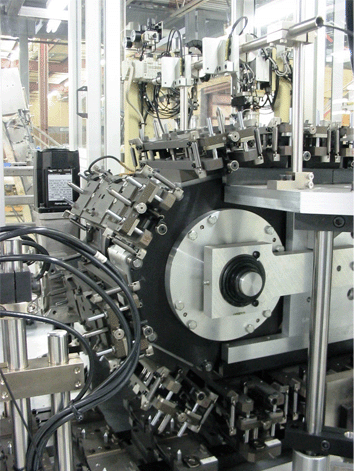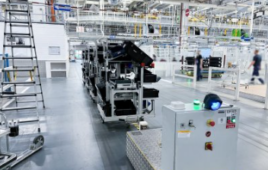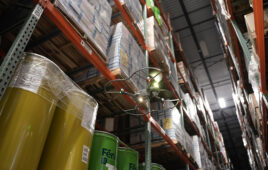The volatile custom machine building market challenges many companies to consistently produce a profit. ABCO Automation, Inc., Greensboro, N.C., has learned not only how to survive, but to thrive in such an environment. The engineers have consistently decreased costs and increased profits by looking for new ways to source custom components for their designs.
ABCO builds machines for a number of industries instead of focusing on a select few. The other side to a diversified customer portfolio, however, is that the company faces much competition, with its additional cost, time and performance pressures.
ABCO constantly searches for new ways to source custom components. In 2004 the engineers looked for a more cost efficient source for machined linear shafts. Previously they purchased blank linear shafts from a distributor and machined them in-house. A visit with Misumi showed them a new option. “I explained that our Linear Shafts can be configured in one-millimeter length increments and offer an array of shaft end configurations as well as a standard manufacturing time of three days,” explained Donald Schmeltzer, senior account manager. No drawings were required because ABCO engineers could use the Misumi online CAD Configurator to design shafts to their specifications and download the native CAD files directly from the site.

The Misumi component list for this machine included linear shafts, flanged linear bushings, strut clamps, locating pins, locating bushings, belts, bearings, plates, bolts and rollers. Each packaging machine contained approximately 10,000 components. Out of this number, around 3,000 were
MISUMI components.
From this successful purchase, the engineers investigated other custom components they could replace. “By reducing the amount of custom components per machine we not only save time and money, we also produce more modular machines that perform their functions better,” explained Dan Pescariu, senior mechanical engineer. “I was impressed with the precision; what you configure is what you get.” Typically in custom work, no two components are the same. It’s common to get a one of a kind component that can’t be copied exactly again. With configurable components, though, it’s easy to work to the exact specifications and repeatedly order that component.
Configurable components were a deciding factor in choosing Misumi as a supplier. “We knew that we would have to duplicate some of the models and build the exact machine several times for one particular customer,” explained Pescariu. Duplicating machines can be a huge issue, especially when dealing with custom components. The ability to use native CAD files, and work with short lead-times and published prices and part numbers takes the guesswork out of the design and build.
The Misumi component list for this customer’s machine included linear shafts, flanged linear bushings, strut clamps, locating pins, locating bushings, belts, bearings, plates, bolts and rollers. Configurable components reduced the total component count of the machine. Each packaging machine contained approximately 10,000 components. Out of this number, around 3,000 are Misumi components. “For a project of this size, if we had to draw and machine all the mechanical components, it could have increased the tooling costs by five times,” estimated Pescariu.
Working with configurable components has changed the engineers’ design thinking. Pescariu explained that before, engineers designed the machine, then specified as many standard components as possible and filled in the rest with custom components. Now the engineers specify the standard components and then specify as many configurable components as possible.
MISUMI USA, Inc.
www.misumiusa.com
ABCO Automation, Inc.
www.goabco.com
Design World :
Filed Under: AUTOMATION





Tell Us What You Think!